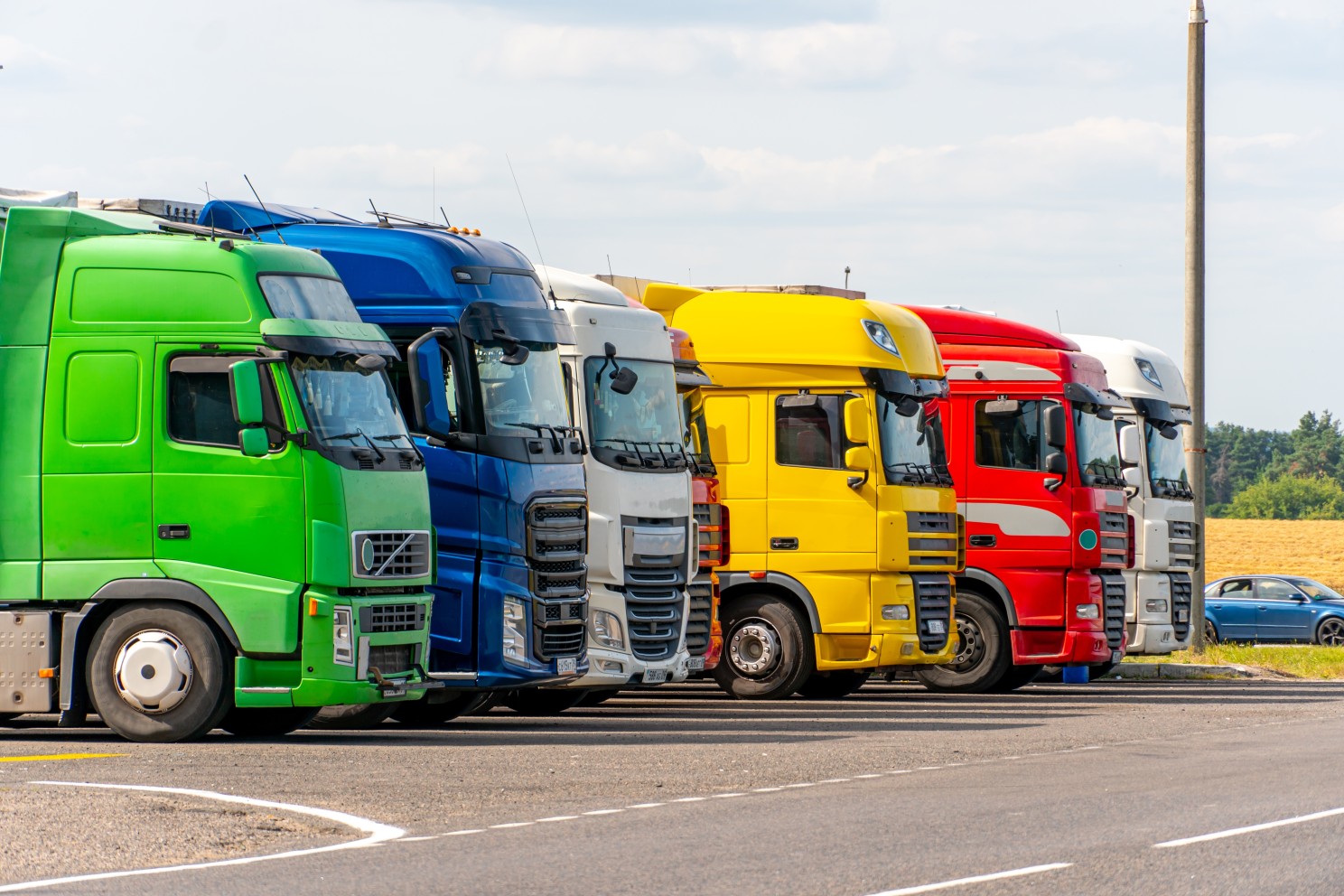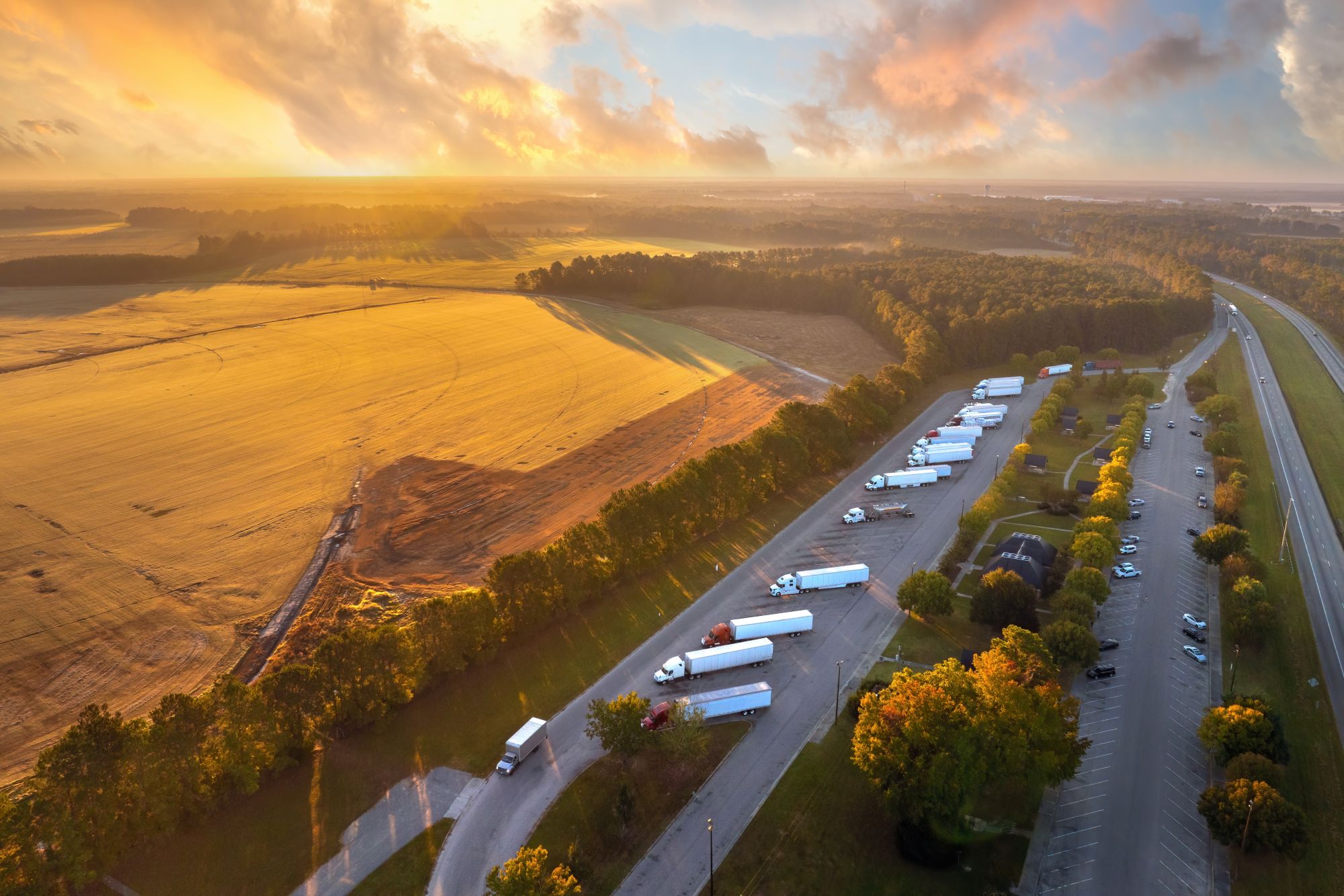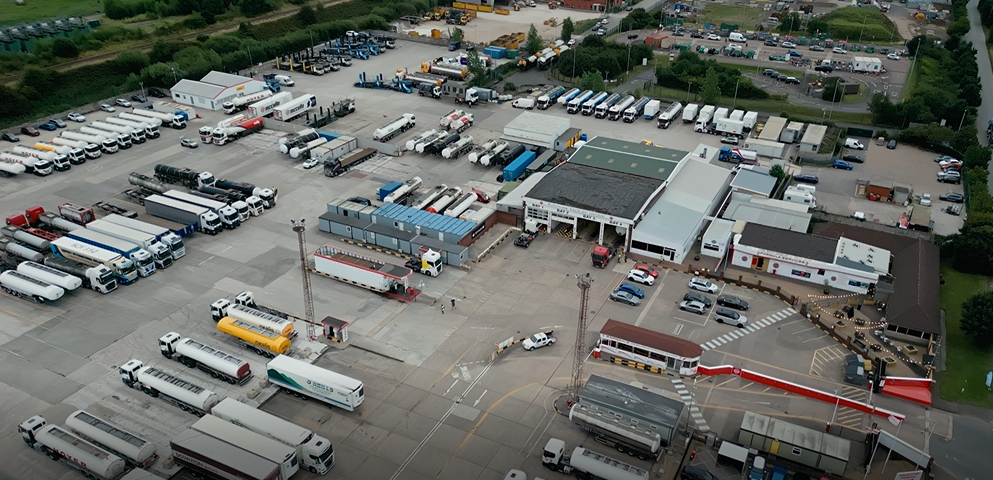
Susie Jones
Jak radzić sobie z różnorodnością kierowców w branży?
Utworzony: 21.08.2024
•
Aktualizacja: 21.08.2024
Gdybyśmy poprosili Cię o opisanie kierowcy ciężarówki, Twoja odpowiedź mogłaby przedstawiać stereotypowy obraz starszego, białego mężczyzny. Czy to prawda? Tradycyjnie branża transportu ciężarowego była zdominowana przez mężczyzn. Z biegiem lat branża stała się bardziej zróżnicowana i otworzyła możliwości dla kobiet, osób w różnym wieku i z różnych środowisk. Różnorodność rośnie, ale wyzwania zewnętrzne, takie jak Brexit i pandemia, mają na to wpływ.
Kobiety w branży
Pomimo niedoboru nawet 100 000 kierowców samochodów ciężarowych w Wielkiej Brytanii, tylko 1% do 3% kierowców ciężarówek to kobiety. Dlaczego więc więcej kobiet nie decyduje się na życie w trasie?
Bezpieczeństwo: Szacuje się, że 60% kobiet prowadzących ciężarówki czuło się niebezpiecznie podczas pracy. Wiele z nich wyraziło potrzebę parkowania przy zapalonym świetle, planowania postojów i noszenia gazu pieprzowego.
Technika i wyposażenie: Z ergonomicznego punktu widzenia ciężarówki zostały zbudowane dla mężczyzn. W przeszłości kobiety uważały, że sięganie po elementy sterujące, regulowanie siedzeń i fizyczne aspekty pracy są ograniczające. Jednak postęp technologiczny oznacza, że wysiłek fizyczny nie stanowi problemu. Większość nowoczesnych ciężarówek ma obecnie wspomaganie kierownicy i automatyczne skrzynie biegów, które ułatwiają pracę.
Pomimo tych niepowodzeń, kobiety zabierają głos i wymuszają zmiany w branży. Kierowcy tacy jak Jodi Smith są nieocenionymi rzecznikami branży. Jodi dzieli się swoimi doświadczeniami związanymi z transportem ciężarowym online i udowadnia, że ta branża nie jest tylko męskim światem.
"Prowadzenie ciężarówki nie jest męską pracą - mogę wykonywać tę pracę z pełnym zestawem akryli! Jest dość fizyczna, ale nie jest trudna" - mówi Jodi, kiedy [rozmawialiśmy z nią w 2021 r.] (https://fleetpoint.org/driver-training-safety/driver-safety-2/are-women-the-future-of-trucking/). Mając za sobą siedem lat doświadczenia, Jodi nadal opowiada się za tym, aby więcej kobiet dołączyło do społeczności kierowców ciężarówek.
Wynik, który może prowadzić do bezpieczniejszych dróg - Dane Amerykańskiego Instytutu Badań nad Transportem pokazują, że kobiety są bezpieczniejszymi kierowcami komercyjnymi. Kierowcy płci męskiej są o 20% bardziej narażeni na udział w wypadku w porównaniu do swoich odpowiedników płci żeńskiej.

Różnorodność wiekowa w branży
Office of National Statistics sugeruje, że średni wiek kierowcy ciężarówki wynosi czterdzieści osiem lat, a 47% kierowców ciężarówek w Wielkiej Brytanii ma ponad pięćdziesiąt lat i zamierza wkrótce przejść na emeryturę. Statystyki te, w połączeniu z obecnym niedoborem kierowców, sugerują zapotrzebowanie na młodszych kierowców w branży.
Łatwiej to powiedzieć niż zrobić; wielu młodych kierowców staje przed następującymi wyzwaniami:
Szkolenie: Uzyskanie komercyjnego prawa jazdy może kosztować nawet 2000 funtów
Ubezpieczenie: Chociaż minimalny wiek uprawniający do prowadzenia pojazdów ciężarowych w Wielkiej Brytanii wynosi 18 lat, wiele osób ma trudności z uzyskaniem ubezpieczenia.
Doświadczenie: Niektóre firmy chcą zatrudniać doświadczonych kierowców, co może być utrudnieniem
Warunki: Życie kierowców ciężarówek może być wymagające - długie godziny pracy i czas spędzony z dala od bliskich mogą odstraszać. Życie w trasie ma jednak wiele zalet, takich jak społeczność, podróże, wynagrodzenie i stabilność pracy.

Firmy poszukujące kierowców mogą skorzystać na zatrudnianiu młodszych kierowców ciężarówek. Są oni bardziej skłonni do przystosowania się do ciągle zmieniającej się branży. Ponadto szybko się uczą i chętnie korzystają z nowinek technologicznych. Wzrost liczby młodszych kierowców dołączających do branży spowoduje niższe wskaźniki rotacji - zmniejszając koszty firmy. Zapewni to również, że branża zaspokoi rosnący popyt na towary i usługi.
Jakie są jednak komplikacje, jeśli jesteś starszym kierowcą? Niektórzy sugerują, że wiek wpływa na zdolności fizyczne i poznawcze, wpływając na zdolność do bezpiecznej jazdy. Są one kluczowe dla kierowców ciężarówek, którzy mają do czynienia z długimi godzinami pracy, wymaganiami fizycznymi i stresującymi sytuacjami.
FMCSA odniosła się do tych obaw. Przepisy wymagają, aby starsi kierowcy przechodzili częste badania lekarskie i oceny jazdy. Niedawno doniesiono, że 90-letni kierowca ciężarówki z Sheffield nadal prowadził ciężarówkę po uzyskaniu zaświadczenia o stanie zdrowia. Wielu twierdzi, że starsi kierowcy wnoszą dziesięciolecia doświadczenia i wiedzy - sugerując, że jeśli są zdrowi, nie powinno być przeszkód w zatrudnieniu.
Jak różnorodność może rozwiązać problem obecnego niedoboru kierowców?
W 2022 r. Urząd do Spraw Weteranów przekazał 100 000 funtów organizacji charytatywnej Veterans into Logistics. Organizacja charytatywna oferuje weteranom możliwość zostania kierowcami samochodów ciężarowych. Finansowanie umożliwiło organizacji charytatywnej znaczne zwiększenie rocznych szkoleń, zwiększenie liczby pracowników i potrojenie dostępnych szkoleń. XPO, ASDA i Muller Milk & Ingredients to firmy aktywnie zatrudniające weteranów bezpośrednio po szkoleniu.
Dodatkowo ASDA przekazała 40 000 funtów na pomoc w dalszym szkoleniu. Wsparcie dla organizacji charytatywnych, takich jak Veterans into Logistics, tworzy bardziej zróżnicowaną kulturę jazdy ciężarówkami, jednocześnie aktywnie walcząc z obecnym niedoborem kierowców.
Co można zrobić, aby przyciągnąć więcej różnorodności?
Posiadanie zróżnicowanej siły roboczej otwiera firmy na różne punkty widzenia i doświadczenia. Co firmy mogą zrobić, aby przyciągnąć różnorodnych pracowników?
Zainwestuj w szkolenia: Szkolenia mające na celu edukowanie pracowników na tematy takie jak ukryte uprzedzenia, integracja w miejscu pracy, zapobieganie dyskryminacji i wspieranie zróżnicowanej siły roboczej mogą mieć pozytywny wpływ.
Zainwestuj w integracyjny proces rekrutacji: Anonimizacja CV kandydata może zmniejszyć nieświadome uprzedzenia.
Promowanie kultury sprzyjającej włączeniu społecznemu: Poinformuj potencjalnych kandydatów o tym, jak radzisz sobie z bieżącymi kwestiami różnorodności i integracji.
Dotarcie do grup niedostatecznie reprezentowanych w tej branży.
Promowanie i przyjmowanie różnorodnej kultury w prowadzeniu ciężarówek może przynieść znaczne korzyści branży. Nie tylko przyczyni się do stworzenia bardziej integracyjnego i przyjaznego środowiska pracy, ale także pomoże w walce z ciągłym niedoborem kierowców. Firmy transportowe są odpowiedzialne za promowanie różnorodności w takim samym stopniu, jak kierowcy ciężarówek.

W jakim kraju jest zapotrzebowanie na kierowców ciężarówek?
Raport opublikowany w grudniu 2022 r. sugeruje, że niedobory w Europie wzrosły o 42% w latach 2020-2021. Wielka Brytania znalazła się na szczycie listy z liczbą 100 000 wolnych miejsc pracy dla kierowców. Meksyk i Chiny również znalazły się wysoko na liście, przy czym niedobory w Meksyku wzrosły o 30%, a w Chinach aż o 140%.
Czy w przyszłości będziemy potrzebować kierowców ciężarówek?
Wprowadzenie autonomicznych ciężarówek sprawiło, że wiele osób sugeruje, że kierowcy ciężarówek nie mają przyszłości. Jest to jednak dalekie od prawdy.
Autonomiczne ciężarówki będą wdrażane stopniowo w wyznaczonych regionach. Prawdopodobieństwo, że wpłynie to na większość kierowców jest niewielkie.
Gdyby autonomiczne ciężarówki zostały wdrożone na całym świecie, kierowcy nadal byliby potrzebni. Zapotrzebowanie na kierowców ciężarówek tylko wzrośnie, ponieważ jest zbyt wiele rzeczy, które mogłyby się wydarzyć, gdyby w kabinie nie było kierowcy.
Jakie są stereotypy kierowców ciężarówek?
Wiemy, jak ważni są kierowcy ciężarówek, ale w oczach niektórych negatywne stereotypy są nadal związane z tą branżą - ten obraz może wynikać z przeinaczenia w mediach, a czasem z kilku niedoświadczonych kierowców. Czym jednak jest ten stereotypowy wizerunek? I dlaczego jest błędny?
Nadwaga - Niektóre postoje ciężarówek oferują niezdrowe fast foody, co może sprawiać wrażenie, że kierowcy ciężarówek spożywają tylko takie jedzenie. Jednak z pewnością nie jest to normą. Zdrowe odżywianie w trasie może być wyzwaniem, ale wielu kierowców trzyma się dobrze zbilansowanej diety i regularnie ćwiczy. Sprawdź nasze wskazówki dotyczące [zdrowego odżywiania w trasie] (https://www.linkedin.com/pulse/how-healthy-truck-driver-snap-account/?trackingId=g91E6xbfIMoJTora4dSipQ%3D%3D).
Źli kierowcy - stereotyp, który nie mógłby być bardziej odległy od prawdy. Zawodowi kierowcy ciężarówek bardzo poważnie podchodzą do kwestii bezpieczeństwa. Często przestrzegają ograniczeń prędkości, zachowują szczególną ostrożność w trudnych warunkach pogodowych i pozostawiają dużo miejsca między sobą a innymi kierowcami.
Wściekłość - Wszyscy wpadamy w furię na drodze i kierowcy ciężarówek nie są tu wyjątkiem. Niesprawiedliwe jest jednak przypisywanie tego stereotypu wyłącznie kierowcom ciężarówek.
Wszyscy kierowcy ciężarówek to mężczyźni - mężczyźni mają przewagę liczebną nad kobietami w tej branży, jednak liczba kobiet wśród kierowców ciężarówek rośnie.



